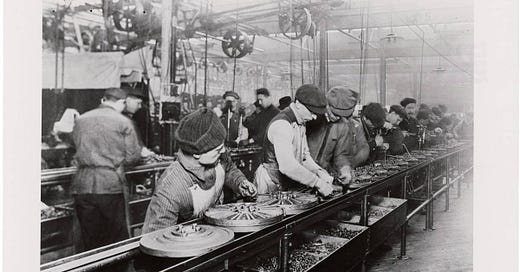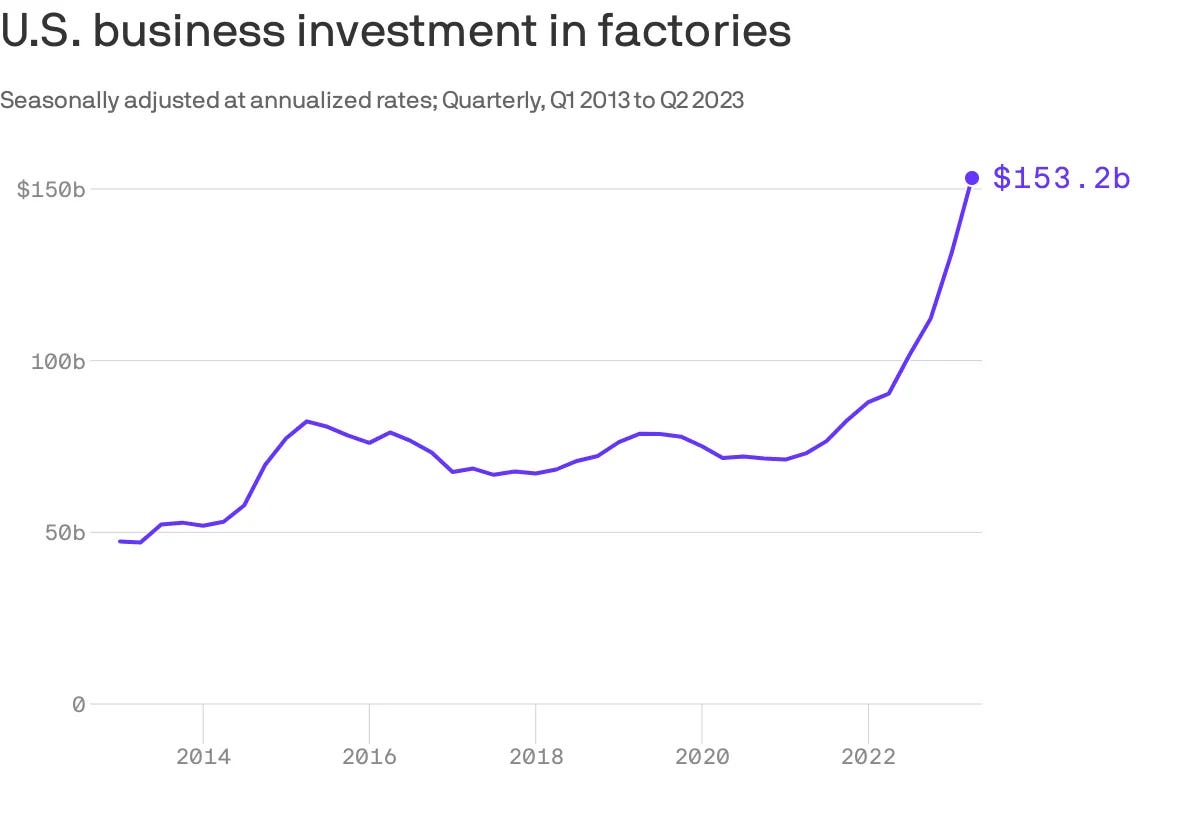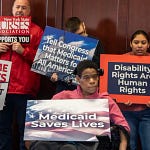This post goes out to both free and paid subscribers, but if you are not already a paid subscriber and value this effort and our growing community, please consider upgrading to a paid membership. Thanks in advance for your financial support of my work —it’s what allows me to keep researching and writing. And thanks to all the new, paid yearly subscribers who signed up during our winter sale! You are appreciated!

“Industrial policy” in its broadest sense refers to the deployment of policy tools with the intent of influencing how we create value—what goods (and services) we produce and how we produce them…The common thread in different understandings of industrial policy is a recognition of the role of government as a key actor in shaping the world of production in line with a public purpose. From a Roosevelt Institute report published May, 2023.
What is the “role of government” in helping shape production of goods and services for a public purpose? If you believe, as I do, that our government exists to do the most good for the most people, then you likely would agree that crafting a strong industrial policy plays a key role in the ways each Administration and Congress steers our economy. For example our industrial policy today, what President Biden calls a “modern American industrial strategy” is being used to temper our extreme inequality, change the trajectory of the climate crisis and generally improve the standard of living and quality of life for everyone, not just the few.
The Roosevelt Institute, for example, describes an industrial policy that implements a broad transformation and includes a focus on “well-being” as primary factors:
…As Todd Tucker and Steph Sterling (2021) suggest, "Perhaps the most important question for policymakers when developing industrial policy is whether it is promoting the industries we need most to allow all members of our society and country to flourish."
The history of industrial policy in the United States is fascinating–it navigates the twists and turns of various administrations and political parties, but has not always come down on the side of the public good and/or the “well-being” of most of our population. The Council on Foreign Relations provided a more traditional definition of industrial policy in an article published in September 2023, that does not explicitly include a reference to “the public good” or to making the economy more fair for all of us :
Industrial policy generally refers to efforts to promote specific industries that the government has identified as critical for national security or economic competitiveness. In a Council Special Report, [Council on Foreign Relations] CFR experts Jennifer Hillman and Inu Manak define industrial policy as “government action that encourages or directly subsidizes the expansion of certain economic sectors over others.”
Examples of the tools government typically uses to implement industrial policy are: subsidies and tax incentives given to specific industries and production sectors, laws, financial investments in research and development and tariffs—to support particular industries that are strategically important. The goal is to… “incentivize the production of more of some goods and services and less of others.”
A recent example of the use of an industrial policy tool is the call by Ohio Senator Sherrod Brown, a Democrat, to permanently ban the importation of electric vehicles from China. While others recommend a high tariff on the import of these vehicles, Senator Brown has suggested a full ban to President Biden because: “Chinese electric vehicles are an existential threat to the American auto industry."
My knowledge of industrial policy is limited to what I’ve read, so I’ll rely on the experts to help us make sense of the major policy changes and laws the Biden Administration has implemented in the last three-plus years . This new policy direction has lifted our country out of the Covid and economic crises, increased manufacturing for the first time in decades and reduced greenhouse gases and ignited the green energy industry.
In addition to independent research institutes and think-tanks, like the Roosevelt Institute, Brookings Institution, Economic Policy Institute, and the Council on Foreign Relations and the Congressional Budget Office, another expert is
who has been writing about industrial policy for decades. Professor Reich wrote a post last year on his Substack newsletter touting President Biden’s success with his “new” industrial policy, saying:The Biden administration is bringing back American manufacturing. It’s one of the most significant (and least publicized) economic stories in recent decades (see chart).
I’m “borrowing” this chart so you can see the trajectory of investment that businesses have made in factories in the last few years. And it is not a coincidence that the U.S. also has had 39 straight months of job growth, with the March 2024 jobs report showing the addition of 303,000 new jobs and the unemployment rate falling to 3.8% (although manufacturing jobs showed no change during March).
Right now, our country is facing at least two major crises: raging economic inequality and climate change. Whether embracing a particular “industrial policy” or “modern American industrial strategy”, our government has always stepped up in times of economic upheaval to guide (and yes, “bail out”) our country’s industries to prevent financial collapse and the ruin of livelihoods and lives. We also have made choices that some industries and particular locations in our country need more of a boost than others — not “choosing winners and losers” as some critics of industrial policy have said.
The Biden Administration and its allies in Congress passed four major pieces of legislation in the last (117th) Congress that invest in a better future:
The American Rescue Plan Act (ARP) passed in the spring of 2021
The Infrastructure Investment and Jobs Act (IIJA) passed in the fall of 2021
The Chips and Science Act passed in August of 2022
The Inflation Reduction Act (IRA) passed in August of 2022
The administration’s overall industrial policy driven by this legislation is also “place-based”, meaning it targets specific areas of the country in need of rejuvenation:
That is, they propose to achieve broader national goals through deliberate and direct investments into specific U.S. places and regions. In this vein, the Brookings Metro counts 19 explicitly place-based industrial policy programs—adding up to some $80 billion of authorized spending—distributed across three of the four previously mentioned pieces of legislation (ARP, IIJA, and CHIPS and Science).
By the way, government funds to clean up from natural disasters like hurricanes, tornadoes, floods, droughts, wild fires and more, which are increasing in severity and frequency because of changes to our climate, currently total between $100-$150 billion a year, give or take a few billion. Any money our government earmarks to lesson the impact of the climate crises (like incentives and tax credits for clean energy development rather than continued funding of fossil fuels, which are included in the above legislation ) should be considered an investment in the health and well-being of our country and the future of a livable planet.
————————————————————————
I’d love to hear what you think about these types of government investments. The four major pieces of legislation passes in 2021 and 2022–are they already having a positive impact on our economy, and more importantly, our lives? Or are we just spending too much? Your ideas are all welcome in the Comment Section below!














Share this post